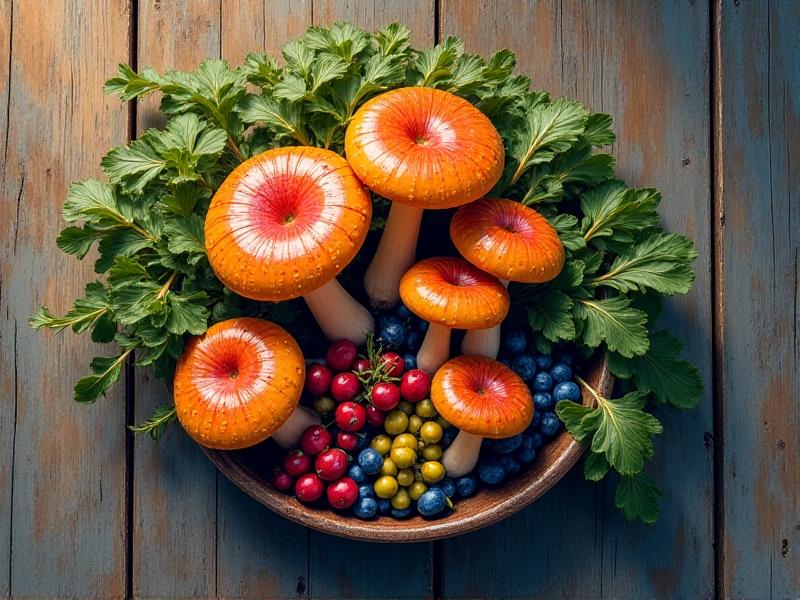Training Kitchen Staff in Proper Handling of Wild-Harvested Produce
Understanding Wild-Harvested Produce: A Primer for Kitchen Staff
Wild-harvested produce refers to fruits, vegetables, herbs, and other edible plants that are gathered from their natural habitats rather than cultivated on farms. These items often have unique flavors, textures, and nutritional profiles, making them highly sought after in culinary settings. However, their wild origins also present specific challenges in handling, storage, and preparation.
Kitchen staff must first understand the nature of wild-harvested produce. Unlike farmed produce, wild items may carry dirt, insects, or other natural debris. They may also have irregular shapes and sizes, requiring careful inspection and cleaning. Training should begin with educating staff about the types of wild-harvested produce commonly used in the kitchen, such as wild mushrooms, berries, and greens, and their distinct characteristics.
Additionally, staff should be made aware of the ethical and environmental considerations of wild harvesting. Sustainable practices ensure that wild ecosystems are not harmed during the collection process. This knowledge fosters a sense of responsibility and respect for the ingredients they work with.

The Importance of Proper Handling Techniques
Proper handling of wild-harvested produce is crucial to maintaining its quality and ensuring food safety. Unlike farmed produce, wild items are not subject to the same rigorous cleaning and inspection processes before reaching the kitchen. This means that kitchen staff must take extra precautions to prevent contamination and spoilage.
One key aspect of handling is thorough cleaning. Wild produce should be rinsed under cool, running water to remove dirt, insects, and other debris. For items like mushrooms, a soft brush can be used to gently clean the surface without damaging the delicate structure. Staff should also be trained to inspect each piece carefully, discarding any that show signs of rot, mold, or insect damage.
Proper storage is equally important. Wild-harvested produce often has a shorter shelf life than farmed items, so it should be stored in cool, dry conditions and used as quickly as possible. Refrigeration can help extend freshness, but certain items, like mushrooms, should be kept in breathable containers to prevent moisture buildup.

Identifying and Avoiding Toxic Lookalikes
One of the most critical skills for kitchen staff working with wild-harvested produce is the ability to identify and avoid toxic lookalikes. Many wild plants have edible counterparts that are safe to consume, but they can be easily confused with poisonous varieties. This is especially true for wild mushrooms, berries, and greens.
Training should include detailed information on the distinguishing features of common edible and toxic plants. For example, staff should learn to differentiate between edible morel mushrooms and their toxic lookalikes, such as false morels. Visual aids, such as photographs and diagrams, can be invaluable in this process.
It’s also important to emphasize the risks of misidentification. Consuming toxic plants can lead to severe illness or even death, so staff should be encouraged to err on the side of caution. If there is any doubt about the safety of a particular item, it should not be used in the kitchen.

Incorporating Wild-Harvested Produce into Menus
Wild-harvested produce can add a unique and exciting dimension to a restaurant’s menu. However, its incorporation requires careful planning and creativity. Kitchen staff should be trained to understand the flavors, textures, and culinary applications of wild ingredients to maximize their potential.
One approach is to use wild produce as a focal point in dishes. For example, wild mushrooms can be featured in a rich risotto or a hearty soup, while wild berries can be used to create vibrant desserts or sauces. Staff should also be encouraged to experiment with pairings, combining wild ingredients with complementary flavors to create balanced and memorable dishes.
Seasonality is another important consideration. Wild-harvested produce is often available only during specific times of the year, so menus should be designed to reflect this. Training should include guidance on how to adapt recipes and menu offerings based on the availability of wild ingredients.
Ensuring Food Safety and Compliance
Food safety is paramount when working with wild-harvested produce. Kitchen staff must be trained to follow strict hygiene and sanitation practices to prevent contamination and ensure compliance with health regulations. This includes proper handwashing, the use of clean utensils and equipment, and the safe handling of raw ingredients.
Staff should also be familiar with the potential risks associated with wild produce, such as the presence of harmful bacteria or parasites. Training should cover the steps needed to mitigate these risks, such as thorough cooking and proper storage. Additionally, staff should be aware of the importance of traceability, keeping records of where and when wild produce was harvested to ensure accountability.
Regular inspections and audits can help maintain high standards of food safety. Kitchen managers should conduct routine checks to ensure that all staff are adhering to best practices and that all wild produce is handled and stored correctly.
Building a Culture of Sustainability and Respect
Working with wild-harvested produce offers an opportunity to build a culture of sustainability and respect within the kitchen. Staff should be encouraged to appreciate the natural origins of these ingredients and the effort involved in their collection. This mindset can lead to more mindful and responsible practices in the kitchen.
Training should include discussions on the environmental impact of wild harvesting and the importance of sustainable practices. Staff should be educated on how to minimize waste, use ingredients efficiently, and support ethical suppliers. This not only benefits the environment but also enhances the reputation of the restaurant.
By fostering a culture of respect for wild-harvested produce, kitchen staff can develop a deeper connection to the ingredients they work with. This can inspire creativity, improve the quality of dishes, and create a more fulfilling work environment.







